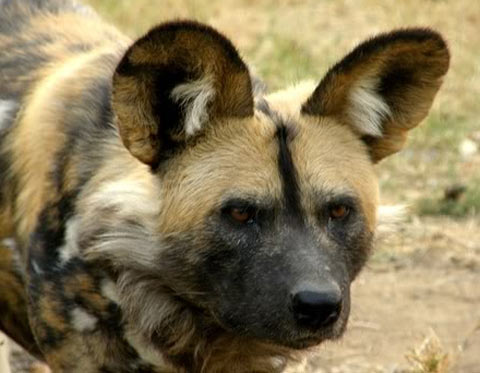African Hunting Dog – Wild, Spotted, Painted but Cooperative
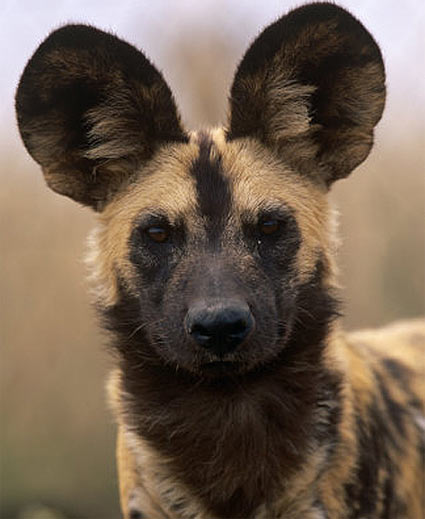
The African hunting dog, also known as a Lycaon pictus, African wild dog, Cape hunting dog, painted dog, painted wolf, painted hunting dog, spotted dog, or ornate wolf; is a species of canid (the same family as domestic dogs) native to the African Continent. It’s often recognized by its dark-brown, black, and yellowish coat, mottled with light patches. It commonly weighs between 40 and 75 lbs (18 and 34 kg), with a body length of about 39 inches (100 cm), and a height of 30 inches (75 cm) from ground to shoulder. It is known for its powerful muzzle and subsequent strong bite.
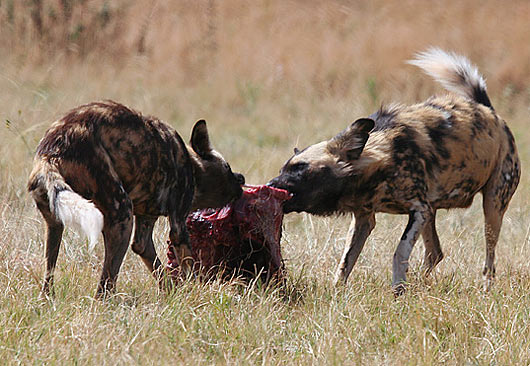
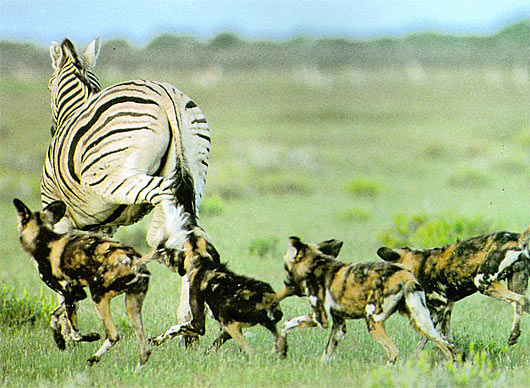
The African hunting dog is very group minded, living in packs of anywhere from 6 to 90 dogs. The dogs show a very high degree of social cooperation and communicate through gestures, postures, and calls. They prefer to live in savannas, plains, mountains up to 10,000 ft (3,000 m), and semi desert regions. They live a nomadic life that never sees them stay in the same place for more than a few days (unless their young are too small to travel).
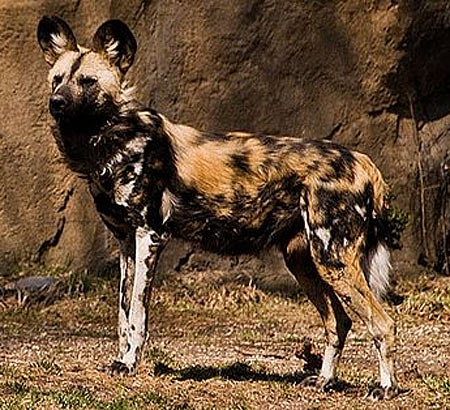
The wild dog spends most of its time during the day relaxing and grooming itself in the shade, and earns its predatory namesake during the early morning, evening, and on moonlit nights. When it is time to hunt, the pack will gather and have a mass greeting ceremony (kind of like a pregame meeting for a sports team). Then, they will set off in search of all the animals they can possibly prey on including: impalas, gazelles, springbok, kudu, reedbuck, wildebeest, ostriches, zebras, warthogs, buffalo, giraffe calves, antelope, and giant eland. They will stalk prey for long periods of time before attacking as a group in a very coordinated fashion that many believe it taught to them by their elders (instead of just being instinctual). Once they have taken down their prey (which they usually do, as their hunts have 90% success rate), they will share their meal with the rest of the pack, with zero aggression. Youngsters are allowed to eat first, food is saved for late-comers, and food is brought back to anyone who stayed behind watching pups. This non-aggressive behavior also extends into their social hierarchy, where alpha status is achieved with communication rather than violence. Their tight-knit and peaceful pack structure is imperative to the continuation of their species, as they are currently considered at threat for endangerment. It it is through cooperation that they survive.
